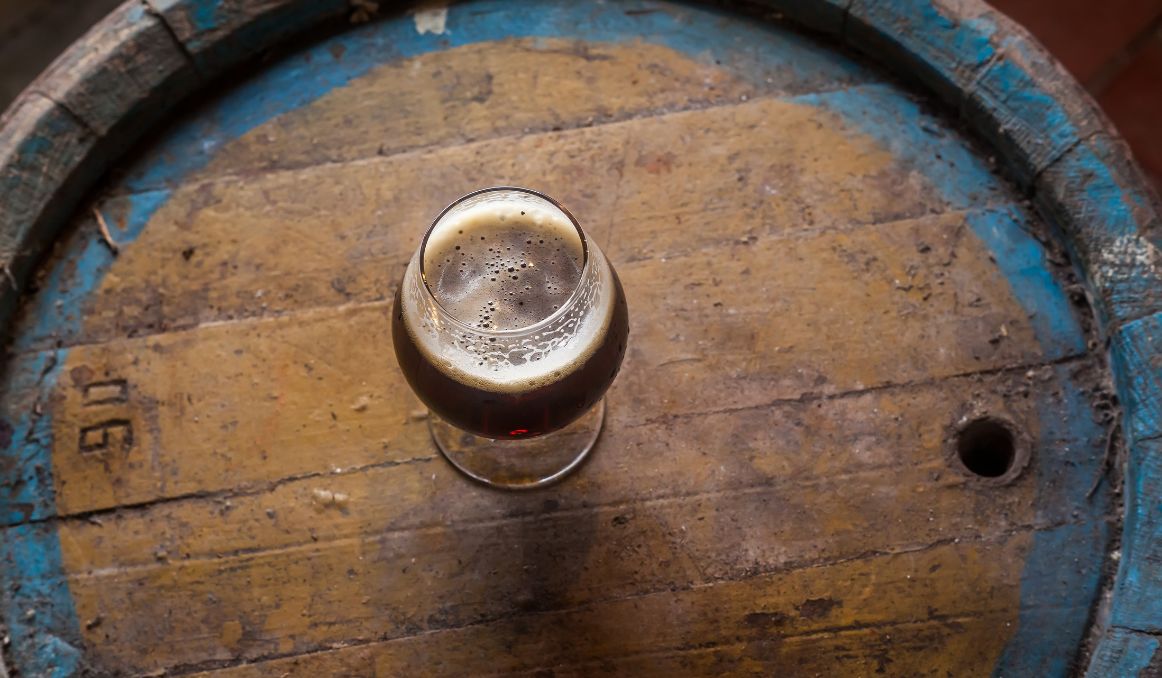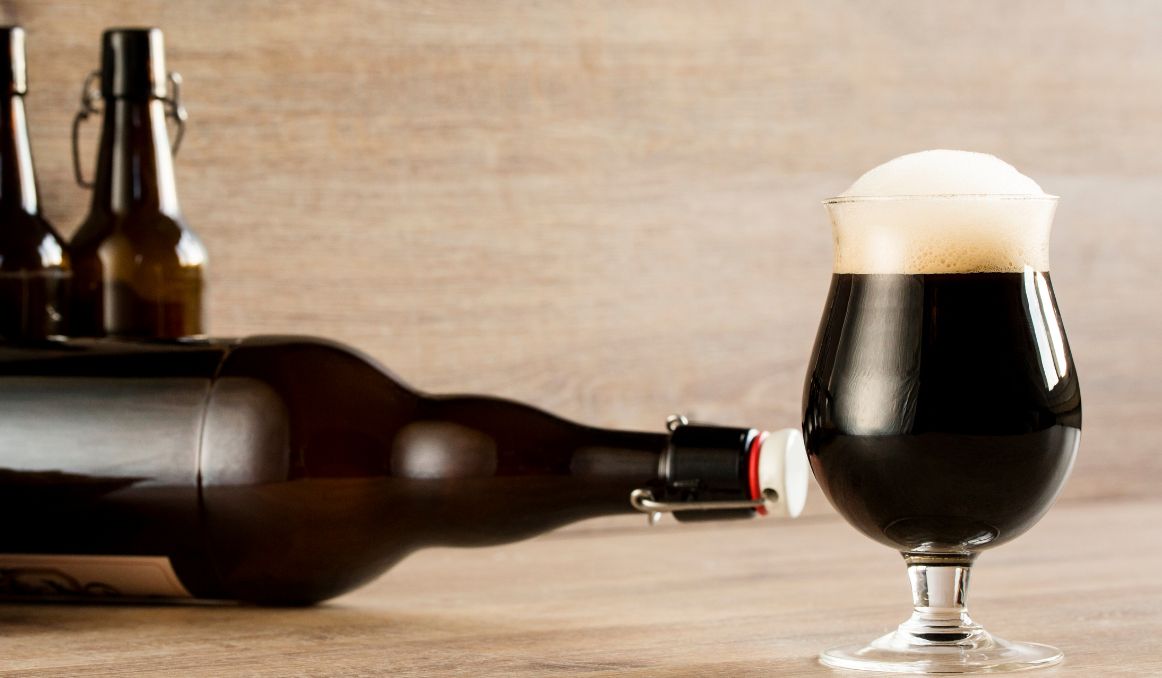Does Aging Beer Increase Alcohol by Volume (ABV)?
Does aging beer increase alcohol by volume (ABV)? No. It does not. The only thing that will really increase ABV in your beer is an increase in sugar. But that does not mean you should not age your beer. And it does not mean you should not increase your sugar. Or both.
The experimentation process in brewing, both at home and in breweries large and small, involves playing with all of these elements to see what your signature batch, or batches, may turn out to be.
Increase Alcohol by Volume

If the goal is to increase ABV in your beer, you have a few ways to increase your sugar content to make that happen.
Remember, the process is as follows:
- Malted, cracked barley (or other grain) is boiled and steeped
- The barley is filtered or drained out and the liquid (wort) is cooled
- Yeast is added
- Hops are added
- You now have beer
During that process, you can play with several of the elements. Because your malted barley may have more or less sugar, if you don’t want to add extra sugar, but you still want to increase your ABV, you can experiment with the grains, with the malting process, and with the cracking.
Malting is what enhances the sugar enzymes in your grain, and cracking or griding is what exposes the sugars to the water to be released. Thus, you could try malting a bit more or cracking a bit finer. Either of those will allow exposure to more sugar in the wort.
And of course, you can always add corn sugar during fermentation to increase your overall alcohol content.
Why?
Each of these steps works because of the important role yeast plays.
Once you have the sugary wort cooled off, you will add yeast and that yeast will get right to work consuming all the sugar and converting it to alcohol and carbon dioxide. The more sugar the yeast has to convert, the higher your resulting alcohol content will be.
None of this has anything to do with aging beer, however.
Aging Beer
The only thing aging beer does is change the flavor. Whether that is a good thing or a bad thing depends largely on the beer and the beer drinker.
One study shows that “the solvent-like stale flavor is associated with the formation of furfuryl ethyl ether.”
This ether seems to be formed during the wort boiling process and malt production, two parts of the brewing process to take particular care if you hope to age your beer without resulting in stale beer flavors. Things like darker malts and higher heating temperatures may contribute to an increase in furfuryl alcohol, so if you hope to age your beer well, you may want to boil at a lower temperature and avoid darker malts.
Having said that, in general, aging beer does not go well. Beer is meant to be drunk as close to the brew date as possible for maximum appreciation of the flavor and aroma profile.
Aging involves a great deal of risk in terms of stale flavors and even skunk flavors if your beer is stored in glass and exposed to light.
Of course, if you’re experimenting, and you simply must know what the effects of aged beer are, there are some important steps to be taken.
How to Age Beer
When you age beer, your goal is to age it well, changing the flavor over time in a way that improves upon it.
What are the factors involved in aging beer well?

Alcohol by Volume
Higher alcohol beers, between 7% and 9% have a better chance of aging well as the alcohol will help preserve, and even improve upon, the flavors and other characteristics of the beer.
Yeast
Wild yeast and bacteria also age well. Yeast still present in the beer can allow for certain flavors to dissipate while others come to the forefront. If you are experimenting with lactobacillus, pediococcus, or brettanomyces, you have a much better chance of flavors evolving (in a good way) in your beer over time.
Hops
Hoppy beers do not tend to age well as the oxidation process will dull the flavor and produce off flavors and compounds.
Storage
All aging beer storage should be done with close attention to two things: darkness and coldness. It is a good idea to keep your beer in a dark, well-sealed barrel, in a cold dark room like a basement or a garage.
Light
And of course, be sure your aging beer never sees the light of day. UV rays in sunlight will destroy a beer both during fermentation and the aging or storage process. You are hoping to avoid off flavors, so opening up a cask of beer to smell the instant skunk scent created when beer is exposed to light is probably not what you’re aiming for.
Age
Ideal storage time is around six months, to allow for maximum impact on the beer’s flavor. At that point, you will know if you have either gone very wrong or very right.
Other Factors to Consider
Be sure you taste your beer fresh before you begin aging so you can establish a flavor baseline. You won’t know if your beer aged well if you can’t be sure what it tasted like before it aged in the first place.
Beers that Age Well
The best beers to experiment with will be your moderately high alcohol beers with a malt-leaning flavor.
Aim for sour ales, Belgian ales, and other beers with active yeast and bacteria that can continue to develop flavors as they age. Imperial stouts, barleywine, strong dark ales, and lambics and wild ales are all great candidates for experimentation as well.
Keep in mind throughout this process that practice makes perfect, and this process should be fun. Work in small batches and see what comes up.
Cheers!
Passionate about the beer and/or wine making process? So are we! If you’re interested in finding out how you can use our technology to control fermentation and monitor your yeast, save work hours and improve the cost-efficiency of your business, drop us a line at [email protected] or check out our product pages:
- Oculyze BB 2.0 (Better Brewing) Yeast Cell Counter App + Hardware
- Oculyze FW (Fermentation Wine) Yeast Cell Counter App + Hardware
Also, you can now get access to a fully functional demo account to test our Web App. Completely free of charge and with no commitment to purchase.
Sources:


